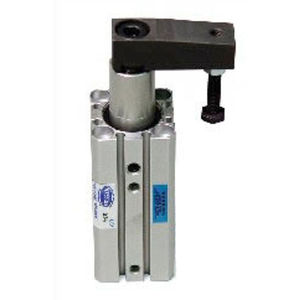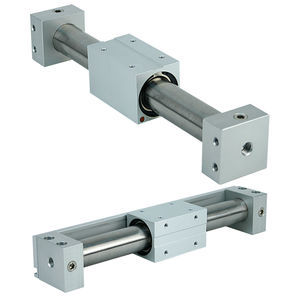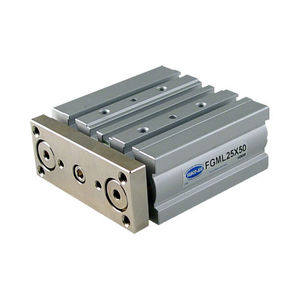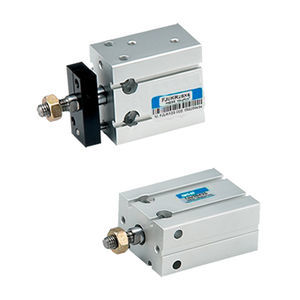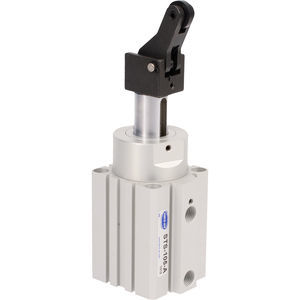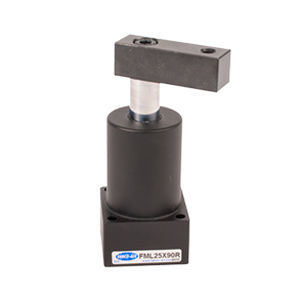
- Products
- Catalogs
- News & Trends
- Exhibitions
Hydraulic clamp F seriespneumaticswingsteel


Add to favorites
Compare this product
Characteristics
- Type
- hydraulic, pneumatic
- Other characteristics
- swing, steel, double-acting, compact, aluminum
Description
SC, FML and FHL swing clamps offer pneumatic or hydraulic operation, depending on the series, and several action types. Durable SC Series double-acting swing clamps provide a standard magnetic piston for position sensing plus workpiece protection features. The SC Series’ clamp arm has a built-in adjusting bolt, while the FML and FMH Series are available with either a single- or double-sided clamp arm.
The clamp arm extends in a straight line away from the workpiece to provide plenty of space to load or unload the part. The arm can rotate 90 degrees to full extension, and it swings 90 degrees when retracting. Customers can choose Model Code R for clockwise and Model Code L for counterclockwise rotation. When the clamp arm is positioned over the workpiece, it follows a straight-line path to apply the clamping force.
SC Series swing clamps operate with compressed air or petroleum-based hydraulic fluid, the FML Series uses compressed air and the FHL Series is a hydraulic model.
Key Specifications
• Action: single side, double side, thread body and single side, thread body and double side
• Bore sizes from 25 through 63 millimeters
• Theoretical output:
o FML Series: up to 432 pounds, retraction, with a 20 millimeter piston rod and 63 millimeter bore at 100 psi
o FHL Series: up to 4,070 pounds, retraction, with a 20 millimeter piston rod and 63 millimeter bore at 1,000 psi
• Operating pressure: 100 psi compressed air (FML Series); 1,000 psi hydraulic (FHL Series)
• Hard anodized aluminum alloy housing
• Hard chrome-plated carbon steel piston rod
• Buna-N piston seal
• A variety of options available
VIDEO
Catalogs
*Prices are pre-tax. They exclude delivery charges and customs duties and do not include additional charges for installation or activation options. Prices are indicative only and may vary by country, with changes to the cost of raw materials and exchange rates.










